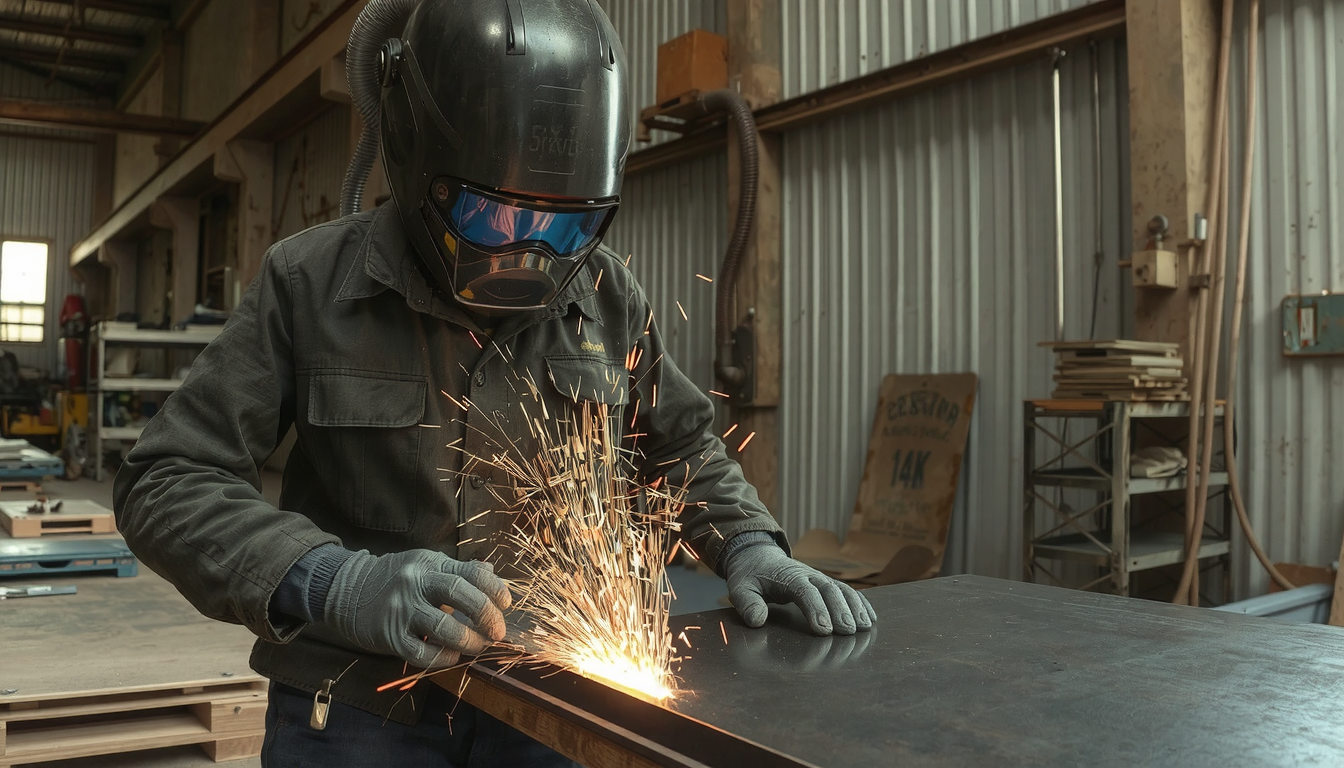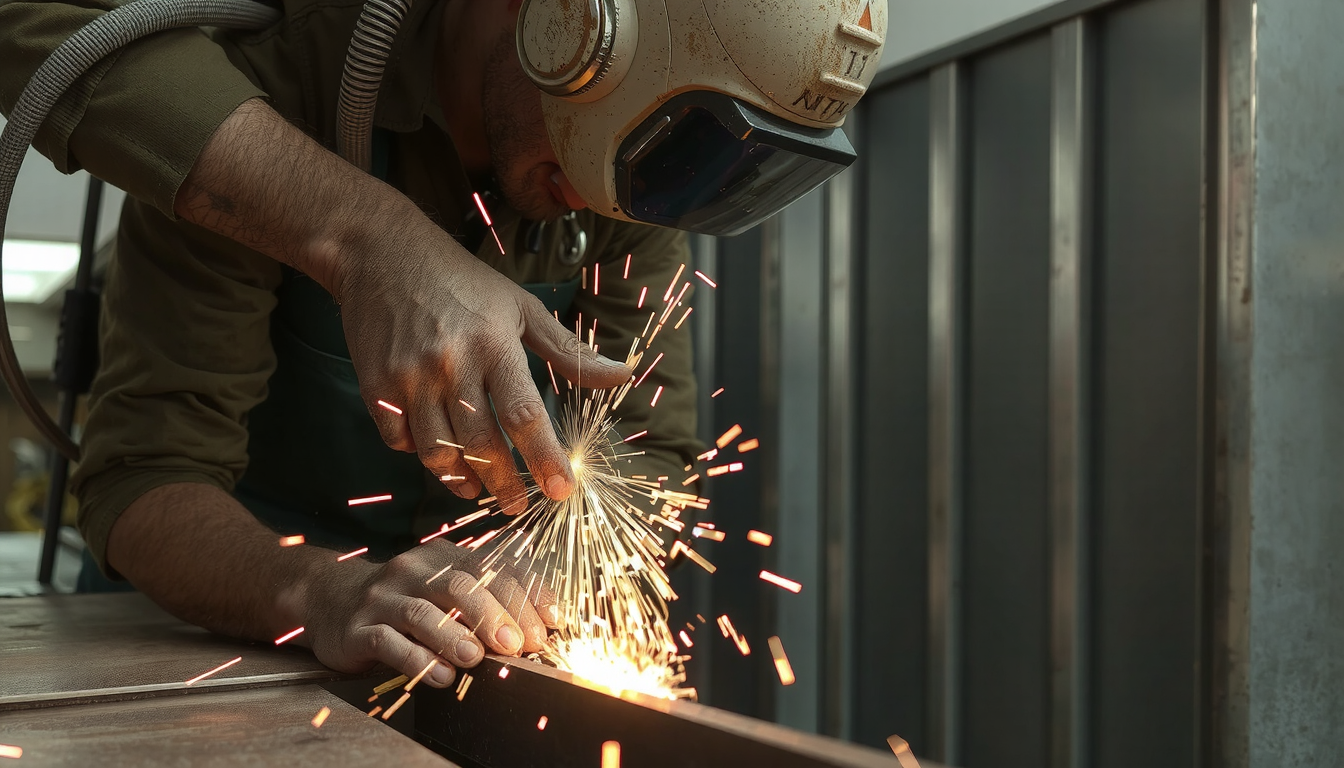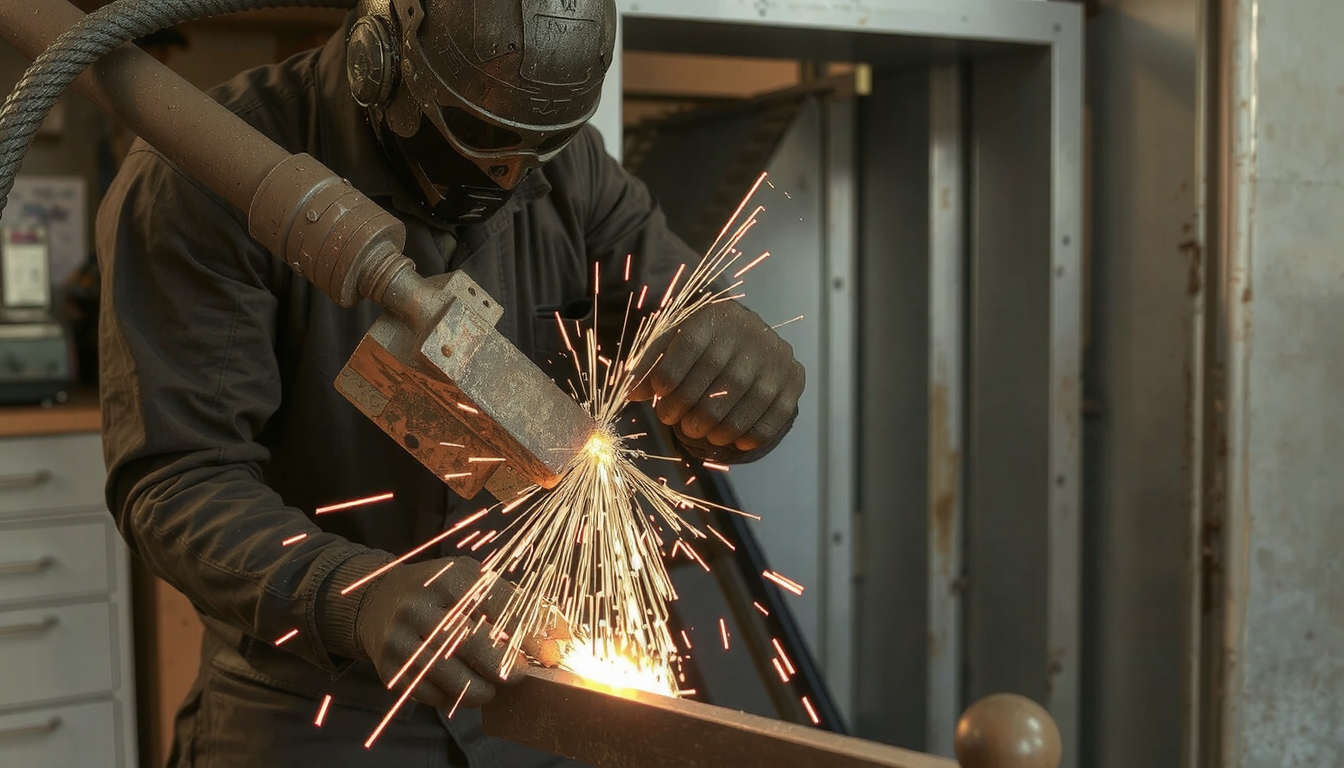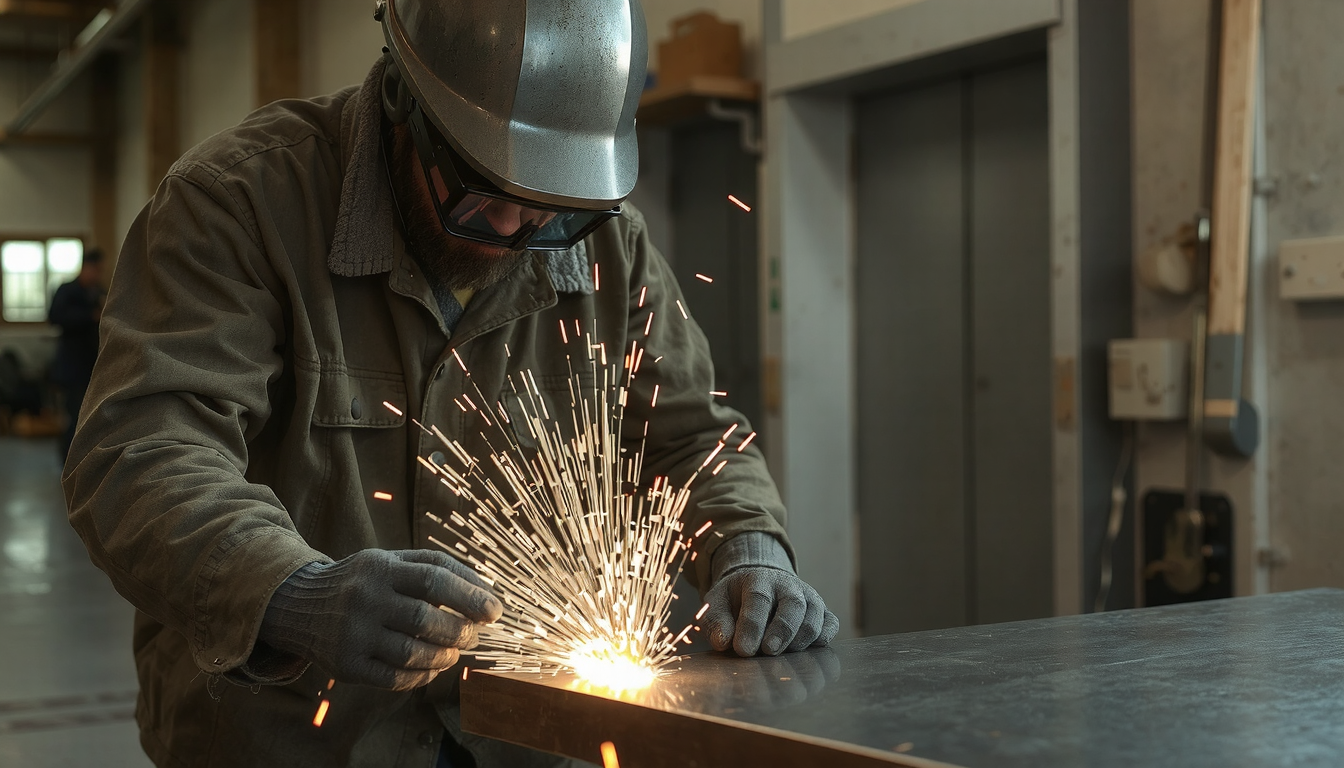Introduction: From Straight Folds to Complex Patterns

The bending of sheet metal is a fundamental process in metalworking. It involves transforming flat pieces of metal into custom parts. This is an essential skill for metalworking, and its results are visible in every aspect of daily life.
You can make a simple shelf bracket or a custom panel for a car. Learning how to bend sheet metal opens up many project ideas for your home or workplace.
This guide deals with the physics of why metals bend. We will discuss easy-to-make, do-it-yourself (DIY) methods. We will also discuss specific bending methods applied by machinery in the industry. Lastly, we will list the most vital tips to obtain a perfect bend every time.
Understanding the Bend: Key Principles and Terms
For successful sheet metal bending, there are fundamental principles to grasp. Essentially, bending causes the material to go beyond its “yield strength.” This is the point at which the material distorts irreversibly. Instead of reverting to its original shape, it stays bent. This transition ensures the materials are permanently reformed.
The outer surface of a bend stretches while the inner surface compresses. When you realize this, you can prevent problems like cracking.
Here are the explanations of some important phrases that you could see when studying how to bend sheet metal:
- Bend Line: This is the straight line where the bend will happen. It acts as the axis for the fold.
- Bend Radius: This is the inside curve of the bend. A sharp corner with no radius is not possible. Trying to make one will weaken the metal and cause cracks.
- Bend Angle: This is the final angle between the two sides of the bent part.
- Springback: Almost all metals naturally want to be flat again after you’ve bent them. This is called springback. You’ll need to account for it in your calculations to achieve an accurate angle.
- K-Factor & Bend Allowance: These are calculations used in professional design. They are used to calculate the exact length of flat metal necessary to form a piece with given bend dimensions.
Springback is very significant. It varies for every material. Soft aluminum will have just 1 to 2 degrees of springback. On the other hand, high-strength materials could spring back 15 or more degrees.
Bending Sheet Metal at Home: 2 DIY Methods

You don’t always need to buy expensive equipment for your projects. Many DIY activities can be done with simple tools that you may already have. These methods work best for thinner materials.
Before Getting Started: Safety and Preparation
Sheet metal work can be hazardous unless you take proper precautions. The edges are often sharp. Safety should always come first.
- Wear thick gloves to handle the metal.
- Always wear safety glasses to protect your eyes against small metal particles.
- Wear long sleeves to protect your arms from cuts.
Before you start bending, check the edges of the metal sheeting you will be using. If the edges are rough or have sharp burrs from cutting, file them smooth. This will make the piece safer to handle.
Method 1: The Workbench Vise and Mallet
This is a traditional method that is used for small parts and thin sheet metals. This works best on thin aluminum or mild steel. Aim for materials that are less than 1/16 inch (or 1.5mm) thick.
- Use a scribe or a marker to draw your bend line on the sheet of metal. For accuracy, a clear line is necessary.
- Place the sheet in a sturdy workbench vise. Position the bend line just above the top of the vise jaws. To prevent the metal from being scratched, place wood on each side of the sheet between it and the vise jaws.
- Take a rubber or wooden mallet. Gently tap along the bend line, starting at one end and working to the other. Don’t hit one spot too hard.
- Continue tapping with even force across the entire line. The metal will slowly start to bend. Keep going until you achieve the desired angle.
Method 2: The Angle Iron and Clamp Technique
For longer, straighter bends, this method is often better than the vise. It provides a straight edge to bend against. It’s a simple method using common tools detailed by Hobby Farms that anyone with a workbench can try.
- Get two pieces of heavy, straight angle iron. Place your sheet metal between them like a sandwich.
- Line up the edge of the top angle iron with your marked bend line. This edge will define your bend.
- Use several strong C-clamps to secure the angle iron and sheet metal to your workbench. Make sure it is very secure and cannot move.
- Once clamped, apply steady upward pressure to the part of the sheet that hangs over the edge. Use your hands to pull it up evenly.
- To create a sharper bend, you can place a block of wood on the crease and tap it with a hammer.

Professional Bending: An Overview of Industrial Methods
When accuracy is required or materials are thicker, special machines are used by professionals. The most widely used machine for bending sheet metal is the press brake.
A press brake uses a punch (the top tool) and a die (the bottom tool) to form the bend. There are different techniques used in a press brake, and each offers different advantages. You can learn about the basics of different bending methods to better understand these industrial processes.
V-Bending
V-bending is the most commonly used method. A punch pushes the metal sheet into a V-shaped die. The deeper the punch presses the metal, the larger the angle of the bend. With this method, you can make a variety of angles with the same tools.
Wipe Bending (Edge Bending)
This process bends the edges of a sheet. A flat die supports the sheet, while a pressure pad holds it down. A wipe tool then moves down and “wipes” the edge of the sheet over the corner of the die. This operation is often employed to create hems, which add strength and remove sharp edges.
Rotary Bending
Rotary bending is a high-tech approach that is gentler on the material. Instead of a punch going down, it uses a round tool that pivots to fold the metal. This minimizes friction and scratching, making it best for pre-painted or polished surfaces.
Choosing Your Method: A Practical Decision Guide
How do you decide between bending sheet metal at home versus using a professional service? The answer lies in your specific project. Ask yourself some questions about your needs.

This guide will lead you to choose the most suitable approach for your task. Answering these questions in the beginning will help you save time, money, and frustration.
| Criterion | DIY Method (Vise/Angle Iron) is Good For… | Professional Method (Press Brake) is Needed For… |
|---|---|---|
| Material Thickness | Thin materials, typically under 1.5mm (16 gauge). This includes soft aluminum and mild steel that are easy to form by hand. | Thicker and stronger materials like stainless steel or high-strength steel. Any sheet over 2mm thick that requires significant force. |
| Required Precision | Low to moderate precision. Suitable for one-off brackets or simple repair patches. Good for art projects where exact angles are not critical. | High precision and repeatability. Critical for parts that need to fit together seamlessly, like electronic cases or machine parts. |
| Bend Complexity | Simple, straight bends. Predominantly for a single 90-degree fold or other easy angles on a flat piece of metal. | Complex parts with multiple bends or bends at different angles. These shapes can be accurately produced by professional machines. |
| Volume/Quantity | One-off parts or a small quantity of two or three pieces. The manual operation is too slow for mass production. | Production runs. A press brake can produce hundreds or thousands of identical parts quickly. |
| Aesthetics | The final part might have some tool marks on it from the vise or hammer. The bend radius may be slightly uneven. | Clean, neat bends with a professional look. Methods like rotary bending leave minimal surface marks. |
Troubleshooting: How to Fix Common Bending Defects
Even with the right equipment, things can go wrong when you bend sheet metal. Even experienced professionals encounter issues. Knowing how to spot and fix these problems is a key part of learning.
Here are some of the most common defects and their remedies.
| Дефект | Причина | How to Fix / Prevent It |
|---|---|---|
| Cracking on the Outer Radius | The bend radius is too small for the material’s thickness and type. The metal is being stretched too much. Another cause is bending parallel to the material’s grain. | Increase the bend radius to give the metal more room to stretch. For some metals, you can heat treat them to make them softer. Try to orient your part so the bend line is perpendicular to the grain direction. |
| Wrinkling on the Inner Radius | The material on the inside of the bend is compressing too much and buckling. This is common in very thin materials or when making a bend with a very large radius. | If the design allows, use a smaller bend radius. In a press brake, use a die with a smaller opening. Make sure clamping force is even and strong enough to hold the material flat during the bend. |
| Inaccurate Angle (Springback) | This is caused by the natural elasticity of the metal. After the bending force is removed, the material tries to spring back to its original flat shape. | You must over-bend the part to compensate. For example, to get a 90-degree angle, you might need to bend it to 88 degrees. The exact amount requires trial and error with DIY methods. Professionals use software and experience to predict it. |
| Distortion Near Holes/Cutouts | Holes or other cutouts are too close to the bend line. The stress from bending deforms the material around these weak points. | As a general design rule, keep all features like holes at least 2.5 times the material’s thickness away from the bend line. If a hole must be close, you may need to add a “bend relief” cut. |
DIY vs. Professional Services: When to Seek Professional Help
DIY methods are useful for simple tasks and for learning the basic principles of how to bend sheet metal. Conversely, some projects are better left in the hands of professionals. The decision comes down to complexity, precision, material, and volume.
If your project requires high precision or has complex shapes, then professional help is best. The same is applicable to thick or high-strength steel. Professional производство листового металла is the most reliable choice in such cases.
Professional shops offer much more than just bending. For example, if you need custom-machined parts to fit with your bent components, they might use Услуги токарного станка с ЧПУ to create them. This ensures everything fits perfectly.
If you have any questions about a specific project or would like a quote for professional work, feel free to talk to the experts. At Mekalite, we are here to guide you through the process and find a suitable solution for your needs.
FAQ: How to Bend Sheet Metal
What is the easiest way to bend thin sheet metal at home?
For thin aluminum or steel (under 1/16″ or 1.5mm), the easiest method is clamping it in a sturdy workbench vise. Then, use a wood or rubber mallet to gently form the bend. Use pieces of wood as pads to protect the metal from the vise jaws.
What is “springback” and how do I deal with it?
Springback is when metal partially returns to its flat shape after you bend it. To fix this, you must “over-bend” the material slightly past your target angle. The exact amount depends on the material’s type and thickness. It often requires trial and error for home methods.
Can you bend all types of sheet metal?
Most common sheet metals like aluminum, mild steel, and stainless steel can be bent. However, how easily they bend varies. Softer metals like aluminum bend without much trouble. Harder metals, like high-carbon steel, may need a larger bend radius and more force to prevent cracking. Uncommon metals like titanium and magnesium can also be bent under certain conditions.
What is the minimum bend radius for sheet metal?
There is no single answer, as it depends on the material’s thickness and type. A common rule for soft metals is a minimum inside bend radius equal to the material thickness. Harder materials may need a radius of 2-3 times the thickness or more to avoid cracks.
How do I get a perfect 90-degree bend?
Getting a perfect 90-degree bend requires accounting for springback. You’ll need to bend the metal to a slightly sharper angle (like 88 degrees) so it springs back to exactly 90. Using a protractor or angle finder is essential for accuracy. When using DIY methods, it’s smart to practice on a scrap piece of the same material first.

